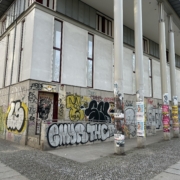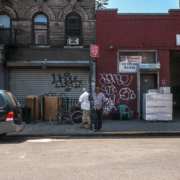How can researchers improve street ethnographies?
Over the past century, a considerable amount of ethnographic research has been conducted and published. Ethnographies are no longer the primary research technique of anthropologists, as other types of social scientists, and students and scholars of business, law, and technology are also doing this kind of work too.
Moreover, there are numerous types of ethnography and a handful of respected scholarly journals now exist that focus solely on reviewing and publishing this type of qualitative research.
One of the major considerations when conducting ethnographies, however, are the inter-related questions regarding how investigator/s collect their data, how they analyze it, and how much resources (i.e., mainly time spent in the field) they need to invest in order to get the outcome they want (i.e., primarily useable/meaningful study).
To begin with many people who either conduct or evaluate ethnographies don’t really know the benefits and limitations of ethnographies. Learning how to conduct an ethnography is often not part of typical graduate school programs.
Likewise, there are many rules of thumb about how to do a “proper” street ethnography and much like most things in life, if you speak to 100 different people you may end up getting 100 different responses. Much of this advice, however, is idiosyncratic. In other words, what worked for one ethnographer, may not work for you and your special circumstances and vice versa.
In reality, almost each type of ethnography requires unique assumptions and techniques.
Over time, however, I’ve noticed some good and bad approaches to conducting street ethnographies, that are frequently used to better understand gangs, graffiti and street art, street crime, street culture, and urban public space.
Let’s start with a handful of ones investigators should avoid.
Bad practices
Seeking Institutional Review Board approval before doing initial field work
If you work in a research setting like a university, then most likely you need to secure human subjects approval from your Institutional Review Board (IRB) in order to conduct your ethnography. This step is often time consuming and difficult to negotiate, as many IRB committees have difficulties with ethnographic research. Some investigators submit the research proposal before even visiting the field. Although there may be some logical arguments for doing this, there are lots of unknowns when doing a street ethnography, including but not limited to funding, accessibility, etc. that need to be worked out and it is advisable that you do some sort of feasibility study by spending some time in the field in a “non research capacity” first before submitting the IRB proposal.
Failing to properly observe
Although you may be able to get a sense of a neighborhood, or a subculture that exists in the area under investigation by driving a bike, car, or scooter, taking public transportation, or walking or running in the location, it is preferable to spend a lengthy amount of time getting off or out of your vehicle, and interacting with numerous people you encounter. Also only walking the main streets, failing to walk back alleys, during the same time of the day or season should be avoided. Just like the familiar criticism of some war correspondents, don’t be fooled into assuming that you know what’s going on at the battle front, by sitting at the hotel bar, or attending a press briefing.
Speaking to the wrong people
Even though you may have a bunch of juicy quotes, that you can pepper your written results with, it does not mean that you have tapped into the essence of what is going on. It’s important to talk to a variety of people in the location you are conducting your study. This includes not only individuals whom you have identified as your key informants, but secondary and tertiary people too.
Good practices
Likewise there are a number of good techniques that you should consider to improve your street ethnography
Read relevant research before, during, and after you do your field research
Read a sufficient body of relevant research on your subject before entering the field, while you are at the location, and after you leave. This critical step should not be lead to analysis paralysis If you engage in this strategy to its extreme you will never get out of your office and into the field. After you have written up your findings, it’s also important to do an additional comprehensive literature scan and read items that were recently published, and reread scholarship that you may have forgotten about or ignored. This can help you improve the contextualization of your findings, etc.
Start by doing a quick scan of the neighborhood
Begin by doing a quick examination of the neighborhood or research setting. As you gain more relevant information, then you should develop a strategy to spend more time there in an effort to immerse yourself in that setting, getting to better know the people who live and work there. That is why running or cycling in or through a neighborhood may not be so bad as an initial pass. This is especially valuable in particularly dangerous neighborhoods. You may decide after doing this initial work, that the setting that you originally wanted to explore is not your cup of tea and decide to pivot to a different neighborhood, setting or subject. This is valuable. Rather than spending hours trying to get a handle on the situation you have made a low risk investment and it is easier to leave at this point in time than after 2, 6, or twelve months in the field.
Find key informants and try to interview them in different situations
The truth is that you can spend lots of time observing and talking to lots of people in the setting under investigation, but the people you interact with are not that helpful in assisting you to understand the core dynamics of what is going on. That is why you must invest sufficient resources in trying to cultivate key informants. Moreover, to the extent possible, these individuals should be interviewed in different settings as they may act differently when they are in for example a bar, or on the street, and in the presence of other people.
Vary the time of day and season you collect your data
A good street ethnography attempts to observe and interact with the people, at almost all times of the day and night and all seasons. Otherwise your study will be more of a snapshot.
Spend a sufficient amount of time in the area under study
One of the questions and doing ethnography is how much time does it take to do an appropriate ethnography. And the answer is it depends. It’s not so much how much time one spends in the field, but the quality of the observations and interactions one achieves and records.
Concluding Thoughts
One way of looking at the techniques of street ethnography is to see them on a continuum. The good news is, notwithstanding the difficulties of conducting street ethnographies during the current COVID-19 pandemic, is that over time most street ethnographers improve the techniques that they use to conduct street ethnographies and the work they do improves.
Photographer Hernán Piñera
Title: Street photography.












